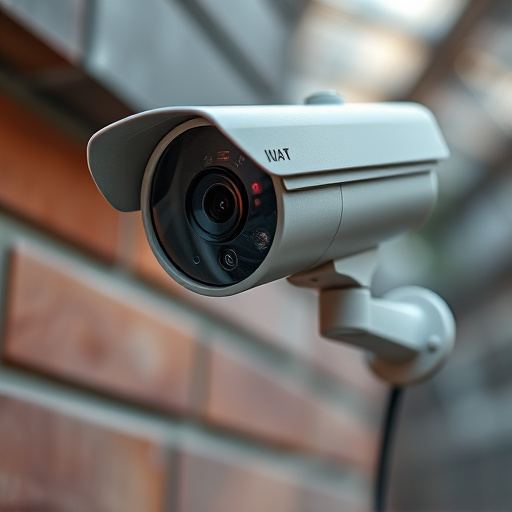Blinking LED Fake Security Cameras offer an affordable, easy-to-install deterrent for home or business security. Strategically mount them at 1-3 meter (3-10 foot) heights near entry points like doors and windows to maximize effectiveness while adhering to privacy laws. Proper positioning ensures clear visibility, good image quality in low light, and prevents false alarms.
In today’s digital age, enhancing home security has become paramount. One innovative approach gaining traction is the utilization of blinking LED fake security cameras as deterrents. This guide delves into the world of these devices, offering insights on understanding their unique features and how to strategically mount them for maximum effectiveness. From considering height factors to exploring legal implications, we provide best practices for optimal placement and visibility, ensuring both safety and peace of mind.
- Understanding Blinking LED Fake Security Cameras
- Factors to Consider for Mounting Height
- Best Practices for Placement and Visibility
- Legal and Safety Implications of Installing Fake Cameras
Understanding Blinking LED Fake Security Cameras
Blinking LED Fake Security Cameras are a popular choice for homeowners and business owners looking to enhance their security without the cost and hassle of installing real cameras. These fake cameras use a blinking red LED light to simulate the presence of an active surveillance system, deterring potential intruders. The blinking pattern is designed to mimic the intermittent activity of a real camera, creating the illusion that someone is always watching.
Understanding how these cameras work is essential for effective placement and deterrent value. The LED lights are typically controlled by a simple circuit that randomly switches the light on and off at set intervals. This unpredictability adds to their effectiveness as a deterrent, as potential criminals cannot easily determine when the camera is active or inactive. Proper mounting height is crucial; placing these cameras at strategic locations, such as entryways, windows, and visible areas of your property, can maximize their security benefits.
Factors to Consider for Mounting Height
When determining the mounting height for blinking LED fake security cameras, several key factors come into play. The primary consideration is the camera’s field of view—how much area it covers and what details it can capture. Mounting the camera at the optimal height ensures maximum visibility, allowing it to observe and record activities without being obtrusive. This is particularly important in residential settings to deter potential intruders while maintaining privacy for occupants.
Additionally, the placement should account for lighting conditions. Proper illumination enhances the camera’s effectiveness, especially during nighttime or low-light situations when criminals are most active. By strategically positioning the camera at a height that captures clear, well-lit images, homeowners can ensure better quality footage, making it easier to identify and apprehend intruders. This is where fake security cameras with blinking LEDs come into play—their built-in lighting features contribute to enhancing the overall surveillance effect while adhering to legal guidelines regarding privacy.
Best Practices for Placement and Visibility
When placing blinking LED fake security cameras, visibility is key. Position them in areas that offer a clear view of entry points, such as doors, windows, and common access points. Avoid hiding them in plain sight, as their purpose is to deter potential intruders while providing a sense of security. Opt for strategic locations where the camera’s light can be seen flickering, subtly alerting anyone attempting unauthorized access.
Ensure the cameras are mounted at a height that allows for optimal viewing angles without drawing unnecessary attention. Typically, this means placing them between 1-3 meters (3-10 feet) above ground level. This height offers a balanced view, ensuring both effectiveness and discreteness. Remember, the goal is to create an environment where intruders feel they’re under constant observation, making your property safer without appearing overly vigilant.
Legal and Safety Implications of Installing Fake Cameras
The installation of blinking LED fake security cameras comes with legal and safety implications that cannot be overlooked. While these devices are designed to deter crime and enhance home or business security, their placement must adhere to local laws and regulations. In many jurisdictions, there are strict rules regarding the visibility and positioning of surveillance equipment to protect privacy rights. Installing fake cameras in areas where they give the appearance of active monitoring without proper disclosure can lead to legal consequences.
Additionally, safety considerations come into play when using these devices. Fake security cameras should not create a false sense of security or mislead individuals into believing they are under constant watch. It’s crucial to inform employees, customers, or residents that these are mockup cameras to avoid any potential alarm or panic responses. Proper signage and clear indications of their nature can help manage expectations and ensure the safety of all concerned.
When it comes to mounting fake security cameras, understanding the specific features of blinking LED models is key. By considering factors like environment, lighting, and legal requirements, you can ensure optimal placement for both visual deterrence and compliance. Best practices emphasize visibility and realistic positioning, while also highlighting the importance of checking local regulations regarding surveillance technology. Remember, a well-placed fake security camera can significantly enhance home or business safety, all while navigating important legal and ethical considerations.
